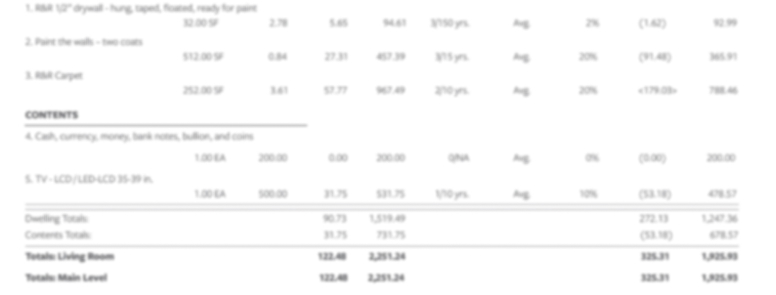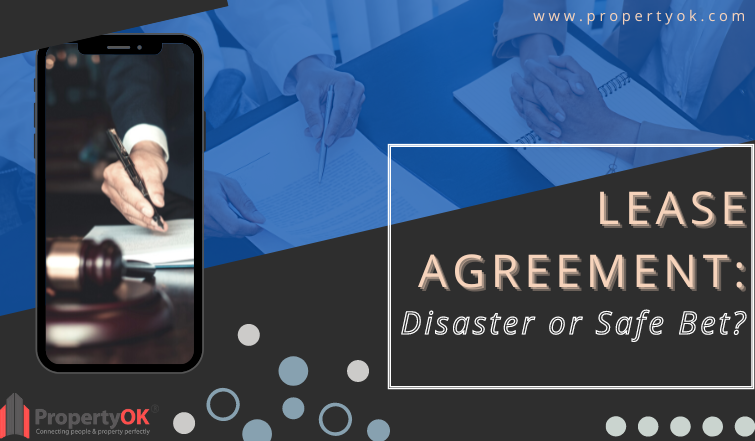You’ve been searching for a new place to call home and finally find one you like. Then, the landlord gives you the lease agreement and tells you to sign it. But do you know what you’re getting into? Lease agreements can be both a recipe for disaster and a safe bet, depending on how well-informed you are about the contract. This blog post will give an overview of lease agreements and provide tips to help ensure that your rental experience is positive.
From understanding the terms of the lease to getting a landlord’s insurance policy, there are a lot of factors to consider when signing a lease. Knowing your rights and responsibilities as a tenant can help you make an informed decision about whether or not this particular agreement is right for you. Plus, being aware of the potential risks and liabilities can help protect you if something goes wrong. With the right knowledge and preparation, a rental agreement doesn’t have to be a recipe for disaster – it can turn out to be just the safe bet you were looking for.
Discover your dream home today: Browse our premium selection of properties in Mumbai and find your perfect match!

What is a Lease Agreement?
A lease agreement is a contract made between a landlord and tenant that outlines the terms of the rental agreement. The lease agreement includes the following:
-The names of the landlord and tenant
-The address of the rental property
-The length of the lease term
-The monthly rent amount
-The security deposit amount
-The date the lease agreement was signed
-Any rules or regulations regarding the use of the rental property
-Any additional requirements from either the landlord or tenant
Read More:
8 VITAL COMPONENTS OF A BUILDER BUYER AGREEMENT
Difference Between a Lease and a Rental Agreement
Leases and rental agreements are both legally binding contracts that outline the terms of a tenant’s occupancy. However, there are key differences between the two. A lease is a long-term contract ( typically lasting one year or more) that cannot be broken without penalty, while a rental agreement is a shorter-term contract that can be ended with 30 days’ notice.
Leases also typically require the tenant to pay rent for the entire lease term, even if they move out early, while rental agreements typically only require prorated rent for the time the tenant occupies the unit.
Finally, leases often have stricter terms and conditions than rental agreements, such as painting restrictions or making other unit changes.
In summary, a lease is a longer-term contract with stricter terms and conditions, while a rental agreement is a shorter-term contract that can be ended more easily.
The Pros and Cons of Lease Agreements
Leasing a property is not without risks, but it can be a safe and profitable agreement if both parties are fully informed and honest. Here are some pros and cons to consider before signing a lease agreement.
PROS:
-Lease agreements can provide security for both the tenant and the landlord. The tenant knows they will have a place to live for a set period, and the landlord knows that they will have a reliable source of income.
-Lease agreements can be flexible. Both the tenant and landlord can negotiate the terms of the agreement to suit their needs.
-Lease agreements can be decided monthly, so neither party requires a long-term commitment.
Also Read:
THE IMPORTANCE OF OCCUPANCY CERTIFICATE (OC) IN REAL ESTATE
CONS:
-If either party breaches the terms of the agreement, it can be difficult and costly to resolve the issue.
-Lease agreements can give rise to disputes between tenants and landlords. For example, if repairs are needed or damage to the property, there may be disagreements about who is responsible for paying for these things.
How to Get Out of the Lease Agreement
If you’re considering breaking your lease agreement, you should keep a few things in mind. First, breaking a lease is generally considered bad faith and will likely result in legal action against you. Second, you’ll have to pay the penalty for breaking the lease, which could include the remainder of your rent for the lease term plus damages. Finally, giving your landlord proper notice before you move out is important, or you may be responsible for paying rent for the entire lease term.
With that said, there are some situations where breaking a lease may be your best option. If you’ve experienced a major life change like a job loss or family emergency, you may be able to negotiate with your landlord to break the lease early. Or, if your apartment is uninhabitable due to repairs that have yet to be made, you may have grounds to break your lease.
Learn More:
THE IMPACT OF RERA ON BUILDERS IN THE REAL ESTATE SECTOR OF INDIA
If you’re considering breaking your lease agreement, understand all the potential consequences first. It’s always best to try and work something out with your landlord before taking drastic measures.
Need more help? Consider talking to a lawyer or housing counselor who can provide more information and advice on your specific situation.
How to Find the Right Lease Agreement
Leases are a great way to ensure that you and your tenant are on the same page regarding the use and upkeep of your rental property. But with so many different leases out there, it can be hard to figure out which one is right for you. Here are a few tips to help you find the perfect lease agreement for your needs:
1. Decide what type of property you’re renting.
Are you renting an apartment, house, or commercial space? Each property type has its unique leasing regulations, so it’s important to know which category your rental falls into.
2. Know your state’s laws.
Every state has laws governing landlord-tenant relationships, so it’s important to be familiar with the rules in your state before signing any lease agreement.
3. Determine what kind of tenant you’re looking for.
Are you looking for a long-term tenant or someone who will only be renting for a short period? This will help you narrow your search to leases that fit your needs.
4. Read the fine print.
Once you’ve found a few potential lease agreements, it’s important to read through them carefully before signing anything. Pay attention to the length of the lease, any restrictions on subleasing, and how much notice is required if either party wants to terminate the agreement early.
Lease Agreement Format
When you are looking for a lease agreement, there are many different formats that you can choose from. Some landlords prefer the traditional paper lease, while others may use an online lease agreement format. There are also many different leases, such as month-to-month or fixed-term leases.
Each type of lease agreement will include specific information. Generally, a standard lease agreement should include the following information:
1. Names and contact details of both parties
2. Property address
3. Length of the agreement
4. Rent amount and payment schedule
5. Security deposit amount and rules for its return
6. Rules for tenant use and maintenance of the property
7. Pet policy
8. Utilities that are included or excluded from the rent
9. Late fees and penalties for non-payment
10. Subleasing rules
11. Termination clause outlining conditions when either party may terminate the lease early
12. Signature lines for both parties to sign and date the agreement
Read More:
HOW TO OBTAIN AN ENCUMBRANCE CERTIFICATE IN THANE
No matter what lease agreement type you choose, including all the relevant details is important. This includes the names of the landlord and tenant, the property’s address, the lease’s length, and the rent amount. You will also want to include any rules or regulations the tenant must follow, such as no smoking or pets allowed.
Once you have chosen a lease agreement format, be sure to read over it carefully before signing. This way, you can understand all the terms and conditions. If there is anything you do not understand, be sure to ask questions, so there are no surprises later on.
Conclusion
In conclusion, entering a lease agreement is not always straightforward and can be complicated. It is important to research the laws of your state and consider all the factors before making any decisions regarding a lease contract. With the right knowledge and understanding of what is expected of both parties, you can ensure that your rental arrangement will be safe and secure.
Lease agreements have the potential to be both a recipe for disaster and a safe bet, depending on how well-informed both parties are. It is important to read over the lease agreement carefully, ask questions if there is something you do not understand, and know your state’s laws regarding rental contracts before signing. With the right information and preparation, you can ensure that your lease agreement experience is positive.
Frequently Asked Questions:
1. What are the 3 common types of leases?
The three common types of leases are Net Lease, Triple Net Lease, and Gross Lease. A Net Lease is a lease agreement where the tenant pays all or part of their rent and additional costs such as taxes, utilities, and insurance. A Triple Net Lease requires the tenant to pay all taxes, insurance, and utilities in addition to the base rent amount. Lastly, a Gross Lease is when the landlord pays for all operating expenses, including taxes, insurance, and utilities, while the tenant only pays one lump sum for rent.
2. What is the rule of lease agreement?
The rule of lease agreement ensures that both parties agree to the terms and conditions stated within the contract. This includes the duration of the lease, expectations for rent payments, rules regarding pets and smoking, and any other items agreed upon by both parties. It’s important to be very clear in the language of your lease agreement to avoid any misunderstandings or disputes down the line. Be sure to thoroughly read and understand all terms before signing the dotted line!
3. What is the difference between rent and a lease?
The main difference between rent and a lease is that a lease guarantees you the right to occupy and use the space for a specific period. This means you are protected from sudden changes during the contract period. Additionally, a lease typically requires a larger upfront payment than renting does. On the other hand, renting offers more flexibility as it generally only requires monthly payments and is easier to terminate than a lease agreement.

 Thank You
Thank You




